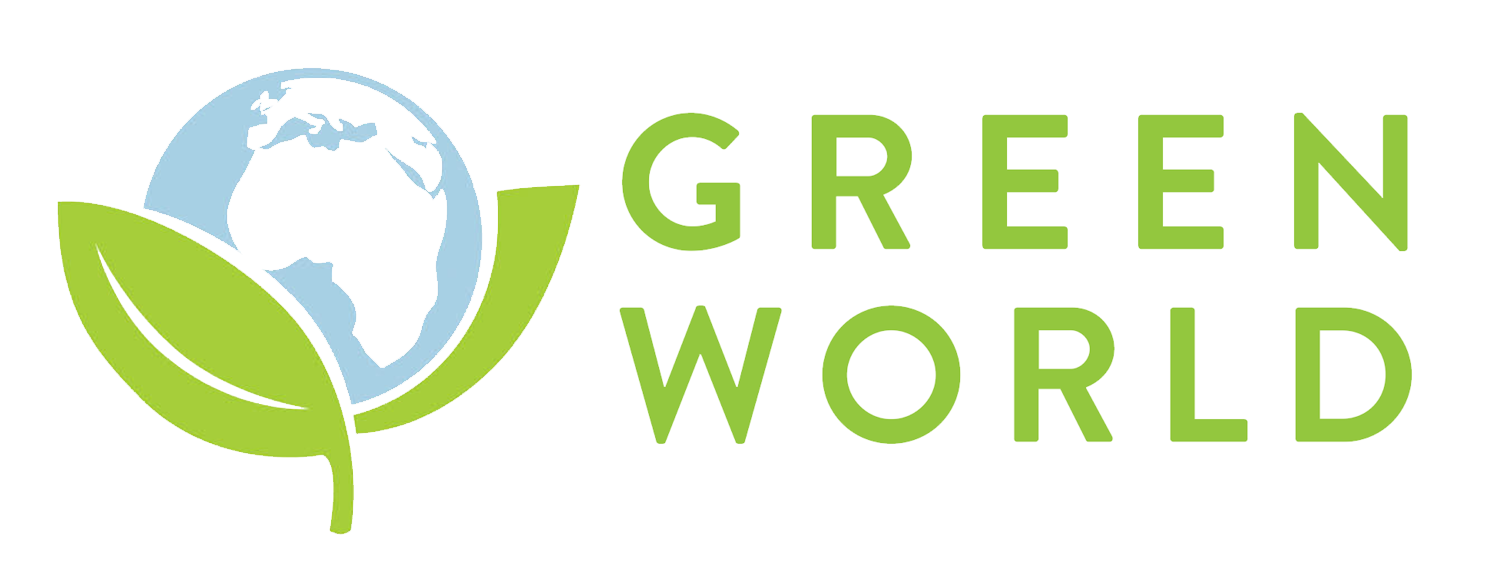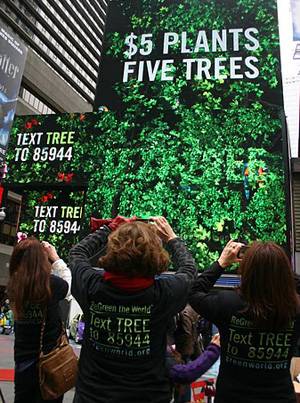Earth Matters: 'Text TREE' campaign plants hope in Kenya
This is a guest post from my friend and champion of the environment, Marc Barasch. He is a best-selling author who created the Green World Campaign to find the best projects around the world to help create and restore the world's rain forests. Here he tells us about his innovative "Text TREE" campaign.
If you’d been in Times Square this past Earth Day and craned your neck upwards, you’d have seen surprised to see — amidst the flashing advertisements for soda, cars, cosmetics — a huge, building-sized animation of leaves and branches swirling across a dozen Jumbotrons urging you to "Text TREE."
It was the kickoff for our Green World Campaign’s year-long initiative to “ReGreen the World,” funding global tree-planting with the same Text2Give technology used by the Red Cross for disaster relief in Haiti and Japan. 2011 is the United Nation's Year of the Forest, and we've worked to make it easy for peoples' fingers do the planting. You can now use your cellphone to text a one-time donation of $5 (which is added to your phone bill) to plant five trees in Kenya. Another cool feature called the "Treemometer" will tally everyone's donations in real-time , showing the growing number of trees we’re planting together.
"Text TREE" donations will directly fund Kenyan youth groups to start tree nurseries on school grounds. Schools are ideal places to spread the greening of Kenya — they have their own water sources, and planting trees becomes a core activity for environmental education. Seedlings will be transplanted onto community lands, cared for by local eco-businesses, and distributed to more schools to seed new programs. Forty percent of these indigenous trees will produce fruit like mkungu (a fruit tree similar to mango) and mraba (which resembles an orange), which will contribute to healthy student nutrition. The goal is to reach 50 percent of the schools in Kenya to help in planting 7.5 million new trees.
Most of these trees will be planted using agro-forestry methods. Trees are the ecological equivalent of one-stop shop: they restore degraded soil, increase crops, feed livestock, provide building materials and firewood, restore biodiversity, sustain villages, and bring dormant springs back to life — all the while sucking CO2 out of the atmosphere. In Ethiopia’s Guarage Zone, for example, we helped plant calliandra and gravillia trees that not only anchor the soil, but produce blossoms for bees to forage, pollinating wild plants and coffee bushes, and increasing yields in village honey cooperatives. Our mission is to help restore the ecology and economy of the world’s poorest places, with local people as full stakeholders in the regeneration of the environment.
Rapidly scaling up this “people and planet” approach is a task that should urgently concern us all. John Holdren, head of the White House Council of Advisors on Science and Technology, has written that one of our few “chances to avoid catastrophe” is to “accelerate afforestation and reforestation in all regions practicable.” Planting new trees and bringing back healthy soil on degraded land in the developing world is “...the best means currently known for removing CO2 from the atmosphere.” He refers to a point not made often enough in climate change discussions: Even if we stopped emitting greenhouse gases tomorrow, our planet already has unsustainably high levels of long-lasting CO2 that has to somehow be absorbed.
We see the Green World Campaign as not just an environmental group, but as a cultural change agent. We’re using new communications technology to create positive feedback loops for global change. We’re trying to get beyond the "black box charity" model and actually see what we're accomplishing together to heal the world. Once planted, stands of trees will be geotagged. As they grow, we hope to create time-lapse satellite imagery with our partner Digital Globe, showing how together we are “regreening” the world. (I don’t know about you, but I hope we can move past those heartbreaking scenes of the glaciers melting and rain forests burning. I want to do something about it.)
I sometimes envision the Green World Campaign as a kind of collective class project to crayon those barren brown spots on the home room map green again. A tree is an emissary to the future. It says to generations to come: "We didn’t forget you.” Green World Campaign programs have helped restore the ancient oyamel forests of San Juan Atzingo, home to the world’s last Tlahuica-speaking people; planted trees in and around the Menegasha and Bale forests of Ethiopia; and assisted impoverished farmers in Orissa, India. In the Philippines, we’re starting “schools-based diversified farms” run by educators, students, and parents to protect the Davao River watershed.
I started the Green World Campaign with the seed of an idea: "What can we accomplish as global citizens if we really put our minds (and hearts) to it?" The answer, I'm convinced, is “just about anything.”
If you want to get involved here's how:
Enter the number 85944
Text the word TREE as the message (not case-sensitive)
A free response message will ask you to confirm your $5 donation
When you answer "yes" to the confirmation, a one-time donation will appear on your next cellphone bill. So let's get out our cellphones and start greening Africa!


